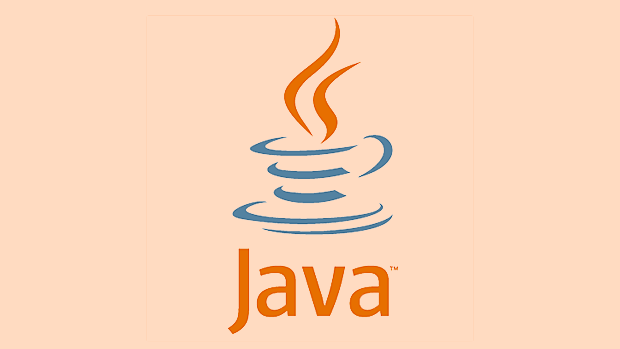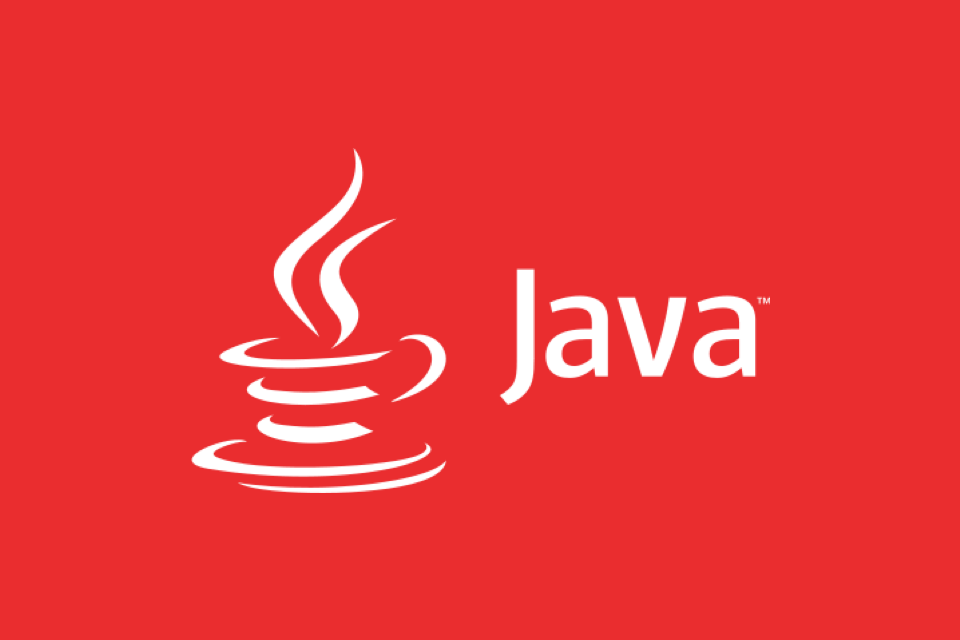The definitive guide to Java Platform Threads (Project Loom)
Jul 28, 2025 am 01:48 AMProject Loom introduces lightweight virtual threads to Java, simplifying high-throughput concurrent application development. 1. Virtual threads are lightweight, JVM-managed threads that enable massive concurrency without the overhead of OS-backed platform threads. 2. They allow synchronous, blocking code to scale efficiently, eliminating the need for complex asynchronous models in most cases. 3. Virtual threads run on carrier threads (platform threads), and the JVM automatically switches them during blocking operations to maximize resource utilization. 4. Structured concurrency provides a clear task hierarchy with automatic cancellation and error propagation, improving debugging and observability. 5. As of Java 21, virtual threads are production-ready and can be used via Executors.newVirtualThreadPerTaskExecutor() or Thread.startVirtualThread(). 6. Best practices include using virtual threads for I/O-bound tasks, avoiding pooling, and steering clear of CPU-intensive work. 7. Real-world benefits include simpler web server concurrency, efficient JDBC usage, and reduced complexity in microservices. 8. Virtual threads should not be used for CPU-bound tasks, low-concurrency applications, or in environments with outdated debugging tools. The result is that developers can now write simple, readable, synchronous code that scales like complex async code, making virtual threads a game-changer for server-side Java applications.

Java Platform Threads — better known as Project Loom — is a major evolution in the Java platform aimed at making it easier to write, maintain, and scale concurrent applications. After years of development under the OpenJDK umbrella, Loom is poised to reshape how developers think about concurrency in Java. This guide breaks down what Project Loom is, why it matters, and how you can start using it effectively.

What Is Project Loom?
Project Loom is an OpenJDK project that introduces lightweight virtual threads to the Java platform. Its goal is to simplify the development of high-throughput concurrent applications by drastically reducing the effort needed to use threads efficiently.
Traditional Java applications rely on platform threads (also called OS threads), which are managed by the JVM but ultimately backed by operating system threads. These are expensive in terms of memory and scheduling overhead. As a result, applications that need to handle thousands or millions of concurrent tasks (like web servers or microservices) often resort to complex asynchronous programming models (e.g., CompletableFuture, reactive streams).

Loom changes this by introducing virtual threads, which are:
- Lightweight: Thousands or millions can be created without exhausting system resources.
- Managed by the JVM: They’re not tied 1:1 to OS threads.
-
Drop-in compatible: They implement
java.lang.Thread, so existing code works unchanged. -
Blocking-friendly: Unlike async models, you can use plain
synchronized,Thread.sleep(), or blocking I/O without performance penalties.
In short: virtual threads make simple, synchronous code scale like complex, asynchronous code.

Why Virtual Threads Matter
For years, the industry has pushed toward non-blocking, reactive programming to handle concurrency at scale. Frameworks like Reactive Streams, Project Reactor, and Vert.x gained popularity because platform threads couldn’t scale efficiently.
But async code comes at a cost:
- Harder to read and debug.
- Complicated error handling.
- Stack traces become shallow and unhelpful.
- Traditional debugging tools struggle.
Virtual threads offer a best-of-both-worlds solution: high scalability with straightforward, imperative code.
Example: Traditional vs. Loom
Before Loom (ThreadPool CompletableFuture):
ExecutorService executor = Executors.newFixedThreadPool(10);
IntStream.range(0, 1000)
.forEach(i -> executor.submit(() -> {
Thread.sleep(1000);
System.out.println("Task " i " done");
return null;
}));Only 10 tasks run concurrently. The rest wait — poor utilization.
With Loom:
try (var executor = Executors.newVirtualThreadPerTaskExecutor()) {
IntStream.range(0, 1000)
.forEach(i -> executor.submit(() -> {
Thread.sleep(1000);
System.out.println("Task " i " done");
return null;
}));
}
// Automatically shuts downNow, all 1,000 tasks run concurrently, each in its own virtual thread. The underlying OS threads (carrier threads) are used efficiently — maybe just a few dozen.
This is massive for server-side Java.
Key Concepts in Project Loom
1. Virtual Threads
- Lightweight threads scheduled by the JVM.
- Created in large numbers (think 100K ).
- Each runs on a carrier thread (a regular platform thread).
- When a virtual thread blocks (I/O, sleep, etc.), the JVM schedules another on the same carrier — no thread parking.
2. Carrier Threads
- The underlying platform threads that execute virtual threads.
- Managed by a ForkJoinPool by default.
- Number of carriers ≈ number of CPU cores (configurable).
- The JVM multiplexes virtual threads onto carriers like an OS does with threads on CPUs.
3. Structured Concurrency (Preview)
Loom introduces a new API for structured concurrency — a paradigm that ensures child tasks are properly scoped and managed within a parent task.
try (var scope = new StructuredTaskScope.ShutdownOnFailure()) {
var user = scope.fork(() -> fetchUser());
var orders = scope.fork(() -> fetchOrders());
scope.join(); // Wait for both
scope.throwIfFailed(); // Propagate failures
return new Result(user.get(), orders.get());
}Benefits:
- Clear task hierarchy.
- Automatic cancellation and cleanup.
- Easier debugging and observability.
This is especially useful in microservices and request-scoped processing.
How to Use Virtual Threads Today
As of Java 21, virtual threads are production-ready and available without flags.
1. Create Virtual Threads
Option A: Executors (Recommended)
try (var executor = Executors.newVirtualThreadPerTaskExecutor()) {
IntStream.range(0, 10_000).forEach(i ->
executor.submit(() -> {
Thread.sleep(Duration.ofSeconds(1));
System.out.println("Done: " i);
return null;
})
);
} // executor.shutdown() is called automaticallyOption B: Manual Creation (Not common)
Thread.startVirtualThread(() -> {
System.out.println("Hello from virtual thread!");
Thread.sleep(1000);
});2. Use with Existing APIs
Most blocking code works as-is:
Thread.sleep()- JDBC (even if not async)
Object.wait()/synchronized- Blocking I/O (e.g.,
InputStream.read())
No need to rewrite your codebase.
Best Practices and Pitfalls
? Do:
- Use virtual threads for request-per-thread models (e.g., web servers).
- Use
try-with-resourceswithnewVirtualThreadPerTaskExecutor(). - Prefer structured concurrency for complex task orchestration.
- Use virtual threads with blocking I/O — that’s their sweet spot.
? Don’t:
- Pool virtual threads — they’re cheap to create; pooling defeats the purpose.
- Use them for CPU-intensive work — stick to platform thread pools (e.g.,
ForkJoinPool) for that. - Assume they’re faster — they’re not faster per task, but allow higher throughput due to better scalability.
- Mix virtual threads with thread-local abuse — they may migrate between carriers, so
ThreadLocalvalues can be lost unless usingThreadLocal.withInitial()carefully.
Real-World Impact
Web Servers
Frameworks like Spring Boot, Tomcat, Jetty, and Netty are already experimenting with or supporting virtual threads.
In Spring Boot 6 (Spring 6, Java 17 ), you can enable virtual threads:
server:
threads:
virtual:
enabled: trueResult? A single server handling tens of thousands of concurrent requests with simple, readable code.
Databases
Even traditional JDBC (blocking) becomes viable under load, as each query runs in a separate virtual thread without tying up OS threads.
Microservices
Reduced complexity in async chains. No more thenCompose, flatMap, or subscribe() hell.
When Not to Use Virtual Threads
-
CPU-bound tasks: Use
ForkJoinPoolor fixed-size platform thread pools. - Low-concurrency apps: No benefit if you only have a few threads.
- Legacy thread-local heavy code: May need refactoring.
- Debugging tools not updated: Some profilers or APM tools lag in virtual thread support (improving fast).
Final Thoughts
Project Loom doesn’t just add a new feature — it redefines the default way to write concurrent Java code.
You no longer have to choose between:
- Simplicity (synchronous code) vs. scalability (async).
- Readability vs. performance.
With virtual threads, you can write simple, blocking, thread-per-request code and still scale to massive concurrency.
It’s not a replacement for async programming entirely — reactive patterns still have their place — but for most server-side applications, Loom is a game-changer.
Getting Started
- Use Java 21 or later (LTS versions recommended).
- Start small: Replace
Executors.newCachedThreadPool()withnewVirtualThreadPerTaskExecutor(). - Test under load — see how throughput improves.
- Explore structured concurrency for complex workflows.
The future of Java concurrency is here — and it looks a lot like the past, but scaled up by 100x.
Basically, if you're writing server-side Java, start using virtual threads now.
The above is the detailed content of The definitive guide to Java Platform Threads (Project Loom). For more information, please follow other related articles on the PHP Chinese website!

Hot AI Tools

Undress AI Tool
Undress images for free

Undresser.AI Undress
AI-powered app for creating realistic nude photos

AI Clothes Remover
Online AI tool for removing clothes from photos.

Clothoff.io
AI clothes remover

Video Face Swap
Swap faces in any video effortlessly with our completely free AI face swap tool!

Hot Article

Hot Tools

Notepad++7.3.1
Easy-to-use and free code editor

SublimeText3 Chinese version
Chinese version, very easy to use

Zend Studio 13.0.1
Powerful PHP integrated development environment

Dreamweaver CS6
Visual web development tools

SublimeText3 Mac version
God-level code editing software (SublimeText3)

Hot Topics
 What is the `enum` type in Java?
Jul 02, 2025 am 01:31 AM
What is the `enum` type in Java?
Jul 02, 2025 am 01:31 AM
Enums in Java are special classes that represent fixed number of constant values. 1. Use the enum keyword definition; 2. Each enum value is a public static final instance of the enum type; 3. It can include fields, constructors and methods to add behavior to each constant; 4. It can be used in switch statements, supports direct comparison, and provides built-in methods such as name(), ordinal(), values() and valueOf(); 5. Enumeration can improve the type safety, readability and flexibility of the code, and is suitable for limited collection scenarios such as status codes, colors or week.
 What is the interface segregation principle?
Jul 02, 2025 am 01:24 AM
What is the interface segregation principle?
Jul 02, 2025 am 01:24 AM
Interface Isolation Principle (ISP) requires that clients not rely on unused interfaces. The core is to replace large and complete interfaces with multiple small and refined interfaces. Violations of this principle include: an unimplemented exception was thrown when the class implements an interface, a large number of invalid methods are implemented, and irrelevant functions are forcibly classified into the same interface. Application methods include: dividing interfaces according to common methods, using split interfaces according to clients, and using combinations instead of multi-interface implementations if necessary. For example, split the Machine interfaces containing printing, scanning, and fax methods into Printer, Scanner, and FaxMachine. Rules can be relaxed appropriately when using all methods on small projects or all clients.
 Asynchronous Programming Techniques in Modern Java
Jul 07, 2025 am 02:24 AM
Asynchronous Programming Techniques in Modern Java
Jul 07, 2025 am 02:24 AM
Java supports asynchronous programming including the use of CompletableFuture, responsive streams (such as ProjectReactor), and virtual threads in Java19. 1.CompletableFuture improves code readability and maintenance through chain calls, and supports task orchestration and exception handling; 2. ProjectReactor provides Mono and Flux types to implement responsive programming, with backpressure mechanism and rich operators; 3. Virtual threads reduce concurrency costs, are suitable for I/O-intensive tasks, and are lighter and easier to expand than traditional platform threads. Each method has applicable scenarios, and appropriate tools should be selected according to your needs and mixed models should be avoided to maintain simplicity
 Differences Between Callable and Runnable in Java
Jul 04, 2025 am 02:50 AM
Differences Between Callable and Runnable in Java
Jul 04, 2025 am 02:50 AM
There are three main differences between Callable and Runnable in Java. First, the callable method can return the result, suitable for tasks that need to return values, such as Callable; while the run() method of Runnable has no return value, suitable for tasks that do not need to return, such as logging. Second, Callable allows to throw checked exceptions to facilitate error transmission; while Runnable must handle exceptions internally. Third, Runnable can be directly passed to Thread or ExecutorService, while Callable can only be submitted to ExecutorService and returns the Future object to
 Best Practices for Using Enums in Java
Jul 07, 2025 am 02:35 AM
Best Practices for Using Enums in Java
Jul 07, 2025 am 02:35 AM
In Java, enums are suitable for representing fixed constant sets. Best practices include: 1. Use enum to represent fixed state or options to improve type safety and readability; 2. Add properties and methods to enums to enhance flexibility, such as defining fields, constructors, helper methods, etc.; 3. Use EnumMap and EnumSet to improve performance and type safety because they are more efficient based on arrays; 4. Avoid abuse of enums, such as dynamic values, frequent changes or complex logic scenarios, which should be replaced by other methods. Correct use of enum can improve code quality and reduce errors, but you need to pay attention to its applicable boundaries.
 Understanding Java NIO and Its Advantages
Jul 08, 2025 am 02:55 AM
Understanding Java NIO and Its Advantages
Jul 08, 2025 am 02:55 AM
JavaNIO is a new IOAPI introduced by Java 1.4. 1) is aimed at buffers and channels, 2) contains Buffer, Channel and Selector core components, 3) supports non-blocking mode, and 4) handles concurrent connections more efficiently than traditional IO. Its advantages are reflected in: 1) Non-blocking IO reduces thread overhead, 2) Buffer improves data transmission efficiency, 3) Selector realizes multiplexing, and 4) Memory mapping speeds up file reading and writing. Note when using: 1) The flip/clear operation of the Buffer is easy to be confused, 2) Incomplete data needs to be processed manually without blocking, 3) Selector registration must be canceled in time, 4) NIO is not suitable for all scenarios.
 Exploring Different Synchronization Mechanisms in Java
Jul 04, 2025 am 02:53 AM
Exploring Different Synchronization Mechanisms in Java
Jul 04, 2025 am 02:53 AM
Javaprovidesmultiplesynchronizationtoolsforthreadsafety.1.synchronizedblocksensuremutualexclusionbylockingmethodsorspecificcodesections.2.ReentrantLockoffersadvancedcontrol,includingtryLockandfairnesspolicies.3.Conditionvariablesallowthreadstowaitfor
 How Java ClassLoaders Work Internally
Jul 06, 2025 am 02:53 AM
How Java ClassLoaders Work Internally
Jul 06, 2025 am 02:53 AM
Java's class loading mechanism is implemented through ClassLoader, and its core workflow is divided into three stages: loading, linking and initialization. During the loading phase, ClassLoader dynamically reads the bytecode of the class and creates Class objects; links include verifying the correctness of the class, allocating memory to static variables, and parsing symbol references; initialization performs static code blocks and static variable assignments. Class loading adopts the parent delegation model, and prioritizes the parent class loader to find classes, and try Bootstrap, Extension, and ApplicationClassLoader in turn to ensure that the core class library is safe and avoids duplicate loading. Developers can customize ClassLoader, such as URLClassL






